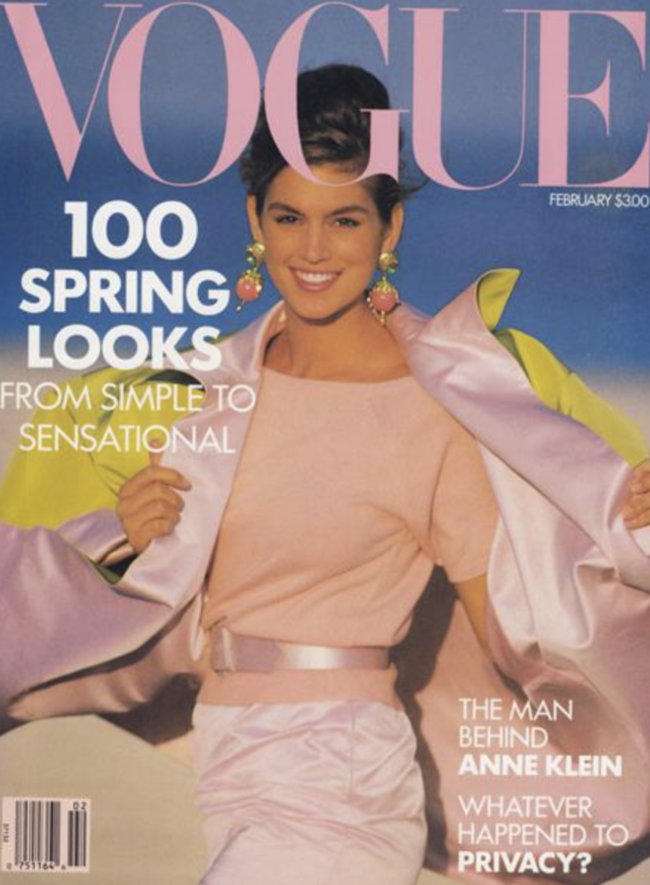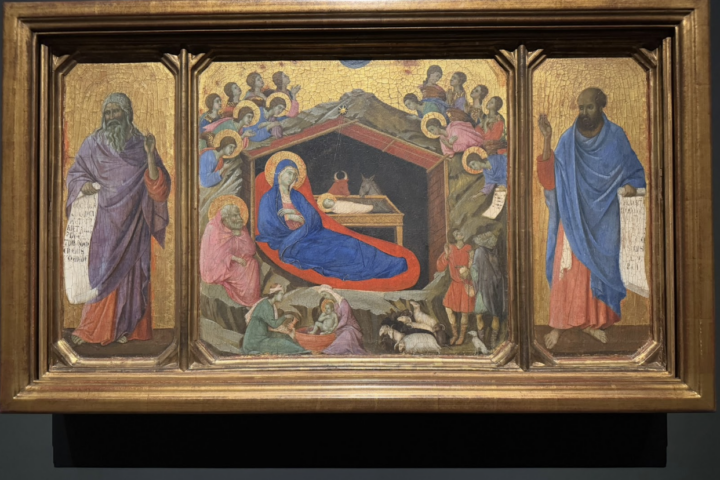Long, floral dresses, sunglasses and jean shorts…the list goes on. My mind immediately goes to these things when thinking about spring style trends, but I have always wondered how this came to be. How did women get from The Gilded Age’s extravagant, conservative dresses and hats to t-shirts and denim? Take a look at the evolution of spring style in women from 1900 to present day to find out:
1900s:
A primary spring trend in the 1990s was the s-shape dress, which rose to popularity in the 19th century. It was made to exaggerate the bust and create the illusion of a narrow waist. Light fabrics decorated with embellishments including lace, velvet and satin, along with sequins and beading, added detail to the dress. As for accessories, extravagant hats and fascinators consisting of tulle and feathers, along with gloves, collars, parasols and fans, were often paired with the dress.
For working-class women, in particular, there was a rise in the progressive button-down blouse, representing a turning point in women’s independence. These shirtwaists were made accessible by being available at various price points. In addition, female participation in many physical activities, including polo, bicycling and tennis, was increasing, but women were still expected to remain ‘stylish’ while exercising.
1910s:
The shirtwaist and s-shape continued to be everyday staples in women’s wardrobes throughout the 1910s. Shirtwaists began to have pieces that could easily be detached, allowing the wearer to switch up her look. The s-shape dress softened into a less pronounced shape, while still emphasizing the bust.
“Sunny spring afternoons called for lightweight linen and cotton gowns embellished with lace and cutwork, known as ‘lingerie dresses.’ This type of dress was associated with a stylish, chic and elegant woman and was intended to be worn to social events. The lingerie dress created a slim silhouette, something vital to the beauty standards of the 1910s.
While hats were still a key accessory, their designs gained simplicity. Hats consisting of large amounts of decorative tulle, fringe and trimming were no longer desirable. People believed that it was “unpatriotic” to be so concerned with the way one looked, resulting in plainer hats at the beginning of World War I. On the contrary, hats increased in proportion, and often required hat pins that were over a foot long.
1920s:
After World War I, women were increasingly seen in more comfortable and simpler outfits. The flapper and drop waist dresses’ short cut displayed the legs and resulted in a youthful look. When running errands or going to work, most women would wear a dress with a matching jacket or a dress suit, in a solid pastel color for the spring. ‘Mixing and matching’ was also common, and women would pair plaid or floral skirts with pastel tops and coats.
Along with accessories such as a pearl necklace and a pair of high heels, a cloche hat would be selected based on one’s look. These hats could be decorated in a variety of ways, and many women opted to repurpose the trimming from old hats at home to save money, which was an early demonstration of sustainability. For night events, turbans and headbands consisting of crystals, feathers or scarves all accompanied a chignon bun, a bob or another similar hairstyle.
1930s:
The bias cut of the 1930s was one of the biggest trends of the decade. “To cut fabric on the bias means cutting the fabric 45 degrees against the weave, creating a fluid, body-skimming garment. ” (Morton). This cut created a feminine silhouette, which flared out towards the bottom in evening wear. For daytime, mid-length dresses came in many different colors and patterns, including floral and polka dots. Another trend was smartsuits, which contributed to the rise of shoulder pads.
Additionally, the 1930s marked when actresses and other public figures truly started to influence the fashion industry. Joan Crawford was deemed a style icon after starring in Letty Lynton (1932). In the film, which came out in the spring of 1932, Crawford wears a long, flowy white dress with large, puffy sleeves, designed by Gilbert Adrian. This was a huge turning point from the tight dresses of the early 1930s to a more romantic, graceful fit.
The film had so much influence that “Macy’s alone sold in the region of half a million copies of the Adrian design in 1932 ” (Maryland Historical Society).The dress was copied by many different brands and is a testament to the influence pop culture has on style.
1940s:
The 1940s were characterized by World War II, and as a result, high-quality fabrics like silk and chiffon were “reserved for war efforts. Instead, practical fashion was dominated by little waste required in its production, epitomized by the rise of the woolen skirt suits for women. While the skirt suit was not a novel fashion item, the stark, menswear-inspired tailoring was.” The tailored suit was designed merely for convenience, and anything that would have previously been decorative was replaced with functional and purposeful elements, like belts and pockets.
Shirtwaists had a comeback. This was attributed to Ginger Rogers wearing a shirtwaist dress in Kitty Foyle (1940). After the success of the film, this dress style was dubbed the ‘Kitty Foyle Dress’ and it provided a clean look, while not being too fancy or extravagant. In an article titled “Shirtwaist Revival” in Vogue’s March 15, 1943, issue, the copy reads: “The shirtwaist look is a right look for this spring. W.P.B. likes it—so will you.” (The W.P.B. being the War Production Board established by President Franklin D. Roosevelt in January 1942 following Pearl Harbor.)
1950s:
Much of the “nipped-in waist and full-skirted” silhouettes at the beginning of the 1950s were inspired by Christian Dior’s ‘New Look’, which first appeared in February of 1947. Christian Dior’s designs, along with the poodle skirt, were major influences for dresses intended for many different types of occasions. Later on in the decade, slimmer silhouettes became more popular.
For Spring, the ‘New Look’ inspired dresses were often seen in fun patterns like stripes and polka dots, floral prints and pastels. At the end of the 1950s, the iconic black-toed Chanel shoes first appeared, marking the end of a decade of femininity represented through clothes. “Fashion historian Gerda Buxbaum writes in Icons of Fashion: The 20th Century, “‘The long years of deprivation during World War II brought forth a yearning for luxury and fashionable things, and women made a special effort to dress appropriately for every occasion; it was considered imperative that one’s accessories matched perfectly’ (69).”
1960s:
At the start of the 1960s, Mary Quant’s miniskirt was very popular, especially amongst youth. As the decade continued on, the skirt kept becoming shorter as it became more accepted into society. Vogue describes the type of woman to wear this skirt as “a younger, leg-baring woman who listened to rock n’ roll (The Beatles, The Who!) and spent her limited disposable income on disposable clothes designed for the moment.”
This was the origin of what is now known as ‘Fast Fashion.’ Dresses made from synthetic fabrics, such as nylon and polyester became common because they were easier to make, and cheaper for the consumer to buy.
1970s:
Spring fashion trends of the 1970s can be summed up as a combination of boho-chic and retro-disco vibes. Maxi dresses made from lightweight fabrics, with fun patterns allowed for free, effortless movement and elegance. Suede jackets provided light layers and texture to a look, and were paired perfectly with a pair of bell-bottom or flared jeans.
This relaxed, but bold style was accompanied by the Women’s Strike for Equality in August of 1970, which advocated for equal rights and freedom for women, and the way women dressed definitely embraced this. This also meant that gender barriers in clothing became less defined, resulting in the term ‘androgyny’ gaining prominence.
1980s:
Especially in the warmer weather, stylish exercise clothes and gym wear were a big characteristic of the ‘80s. Fitness instructor Jane Fonda created a phenomenon of bright leotards and legwarmers after releasing her first workout video in the spring of 1982.
On top of fun workout clothes, romantic, prairie dresses were incredibly trendy. Princess Diana’s wedding dress, designed by David and Elizabeth Emanuel, was a quintessential example of this, with its puffy padded shoulders and 25-foot train.
As the decade continued, however, women found the need to transition from the feminine fairy-tale-like style to a wardrobe consisting of pieces that made one feel strong and assertive. Women felt the need to ‘power dress.’ Kathryn Hennessy, author of Fashion: The Ultimate Book of Fashion and Style, wrote, “As more women entered traditionally male-oriented work environments, they found it advantageous to dress as though they were in command, and sure of their sexuality. This meant jackets with heavily padded shoulders, vibrant colours, big hair-dos, bold accessories, and shoes with pointed toes and spiked heels.”’ (396)
This was evident in Thierry Mugler’s Spring/Summer collection of 1986, which represented the strength of women. It featured bugler blazers, bras, and bustiers.
1990s:
The relaxed-grunge aesthetic of 90s spring style would not be what it was without baggy jeans, graphic tees, Y2K shades and fanny packs. Thrifted shirts of bands like Nirvana and Pearl Jam were considered stylish. Marc Jacobs for Perry Ellis’ Spring/Summer 1993 was one of the first designer takes on the grunge aesthetic.
Suzy Menkes reviewed the show in the January 1993 issue of Vogue and wrote, “I told Marc Jacobs that his Perry Ellis show—all floppy coats worn with crochet vests and hot pants or ombre chiffon tunics and pajamas—looked like hippies with attitude. ‘I don’t like labels. It’s how you wear clothes today. It’s how the girls look when they come in here,’ he said. How grunge is that?”
Minimalism was a central component of fashion in the early 1990s. Solid white, black, and navy became the most common colors in clothes, with the exception of almond pastels, a huge contrast from the vibrant colors of the previous decade. Female hip-hop groups such as TLC and later Destiny’s Child inspired the popularity of cargo pants and metallic sports bras.
2000s:
As television became more accessible, it played a key role in the 2000s spring style. Characters’ wardrobes from popular television shows like Lizzy McGuire and Hannah Montana inspired themes of chunky belts and dresses worn on top of jeans, as well as micro miniskirts.
Much of the style seen on red carpets also became more relaxed and influenced the style of those who tuned in to watch them. Although many of these controversial bold ‘fashion risks’ have been criticized, they helped the people who made them develop and demonstrate their own personal style, something quite admirable.
2010s-2020s and Onward
With the release of Instagram in 2010, and TikTok in 2016, Generation Z and Generation Alpha, the future leaders of our fashion industry, have taken the majority of influence from well-known influencers. Fast fashion brands like Brandy Melville, PacSun and Skims use social media and influencers to market their clothing.
While it can be fun to check out the newest trends, the constant content consumption and social comparison of social media is detrimental to mental health. In addition, it leads to the feeling of needing to buy something new, simply because someone who holds social power was seen wearing it. This social pressure, however, has always been around and might not ever go away. Taking it back to the s-shape dress of the 1900s, even then, women felt pressured by societal norms to have to display their bodies in a certain way. We have come a long way from that, and yet, women still have similar experiences.
Common spring trends derived from social media include short jean shorts, cotton tank tops, and long, satin floral skirts. This year, I predict a rise in long denim shorts and matching floral sets.
This spring, along with the years to come in the fashion industry, I hope that people make style decisions that empower themselves and demonstrate what it means to be an individual to those around them. To quote Anna Wintour, regarding style, “ Let it be unique to yourself and yet unidentifiable to others.”






